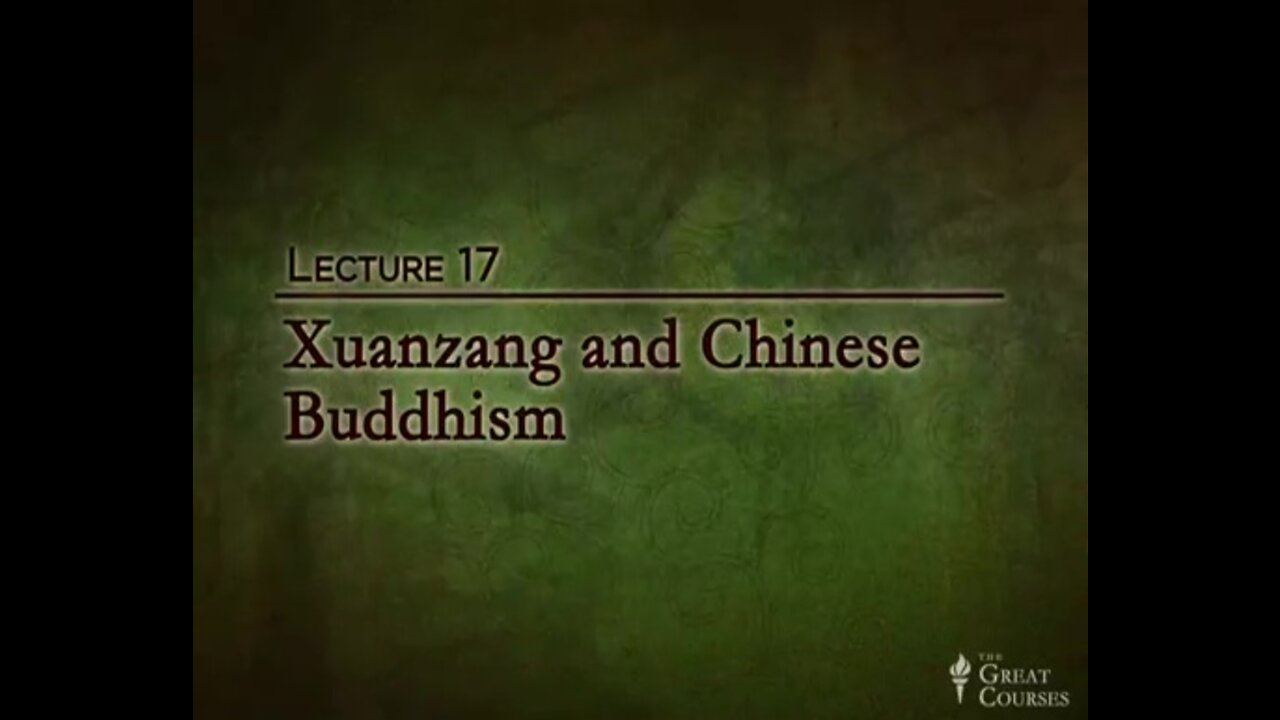Premium Only Content

17 Xuanzang and Chinese Buddhism
This is the 17th lecture on the Great Minds in the Eastern Intellectual Tradition by Dr. Grant Hardy, in which he looks at the great Chinese traveller and translator Xuanzang, and the various Chinese Buddhist schools that arose.
The first part is concerned with establishing the political history of China, and how that contributed to the acceptance of Buddhism in the country. Around the 6th century CE China was in great turmoil following the dissolution of the Sui Dynasty, and the rise of the Tang.
Xuanzang was also caught up in this, as when he wanted to leave for India to find the missing texts of Buddhism he could not get official permission to leave the country and had to do so illegally.
When 16 years later he returned to China he brought an enormous treasure house of scriptures with him consisting of over 600 texts from the Mahayana and Hinayana traditions, and spent the rest of his life translating many of them.
The next part in Dr Hardy’s presentation concerns the schools that developed in China and became popular in later times, these include Tiantai (focused on the Lotus Sutra), Hauyan (Flower Ornament Sutra), Pure Land and Chan. None of these schools really arose out of Xuanzang’s work, but were the major schools in the country, and still are.
[This upload is for informational purposes only, and is not monetized. If anyone claims copyright and wants the video removed, please write to dharmadocus@gmail.com and the video will be removed immediately.]
-
 16:12
16:12
T-SPLY
7 hours agoJeff Bezos Is Now Enemy #1 For The Trump Administration
32.3K35 -
 7:27
7:27
China Uncensored
7 hours agoChina’s DISTURBING Expansion in Africa
7503 -
 1:24:27
1:24:27
Redacted News
3 hours agoELECTION SHOCK! Canada Declares War on U.S. and Trump, India going to war with Pakistan? | Redacted
109K196 -
 1:18:53
1:18:53
vivafrei
6 hours agoCanada Elected a Globalist, WEF, 3-Passport-Carrying Manchurian Candidate! And Other News! Viva Frei
67K75 -
 1:30:14
1:30:14
Michael Franzese
3 hours agoFace to Face with a Former Mexican Mafia Hitman
30K2 -
 LIVE
LIVE
The Nima Yamini Show
3 hours agoOy Vey & Facts.. A Call In for the Misinformed
241 watching -
 2:11:38
2:11:38
The Quartering
6 hours agoNew Karmelo Anthony Video, Pride Collapses, Bill Belichick Elder Abuse, Trump Assassin Texts Drop!
154K39 -
 LIVE
LIVE
LFA TV
22 hours agoALL DAY LIVE STREAM - TUESDAY 4/29/25
434 watching -
 1:05:33
1:05:33
John Crump Live
3 hours ago $0.50 earnedOur Tier List ofAR-15s!
14.3K1 -
 1:19:07
1:19:07
The Confessionals
7 hours agoWhat If You Were Chosen for Battle in a Realm Where Darkness Rules?
15.4K3